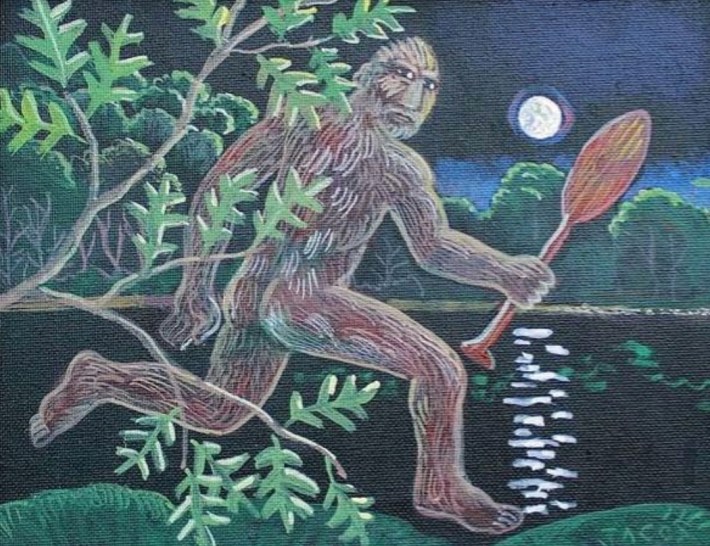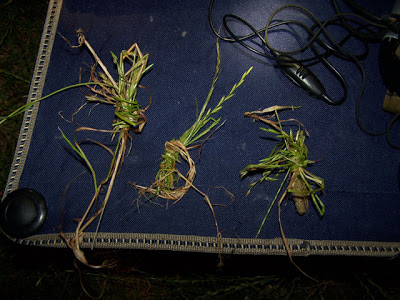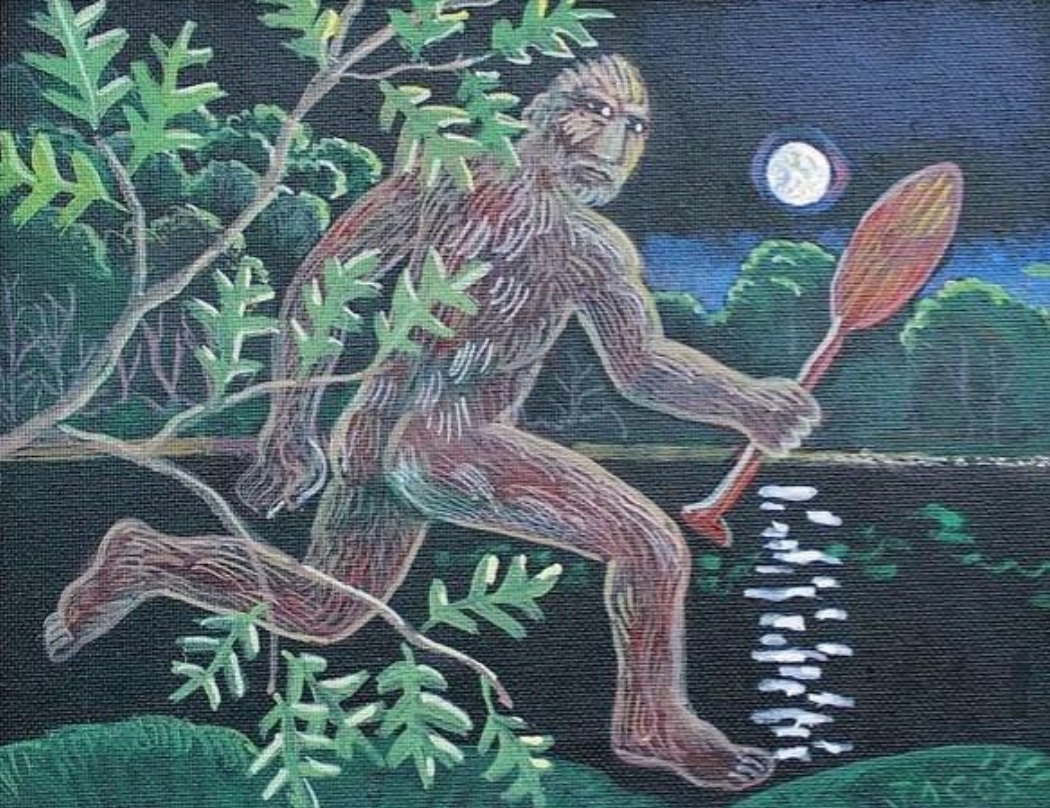Have a look at any official Oklahoma tourism brochure and you’ll find references to Bricktown, professional sports teams, art museums and Route 66. But what the bigwigs in OKC fail to mention is a phenomenon that has quietly been drawing entire dozens of tourists to the state for years: Bigfoot.

Outside the garish light of the big cities, nestled in the wooded easternmost regions of the state, two small towns host festivals each year that embrace the hairy, bipedal hominid known worldwide as Bigfoot. Sasquatch. The Yeti. Skunk Ape. The Clam Eater. These Bigfoot symposiums draw both locals and out-of-towners to a carnival-like atmosphere including song and dance, folk art, funnel cakes and spaghetti dinners.
At the heart of these gatherings, however, evidence-based discussions reign supreme. Bigfoot enthusiasts point to multiple sources of proof including hair samples, plaster casts of footprints, firsthand eyewitness accounts and audio recordings of vocalization. But perhaps the most overlooked set of evidence is the best – Bigfoot’s Balls.
Here's a photo:

Symposium organizers keep Bigfoot’s balls on prominent display. Multiple photographs of the balls are mounted on display boards for viewing. If mere photographs can’t satisfy your orb-curiosity, researchers also provide several samples of actual bigfoot grass balls in a protective glass display.
First time viewers of Bigfoot’s balls often find themselves asking the obvious: what purpose must these balls serve? A definitive answer remains elusive, but ball-centric theories abound. One on-line forum dedicated to the specific topic of Biggie’s balls puts forth this careful analysis:
“...the actual grass balls are even more fascinating, they appear to be quickly twisted blades of grass ... which would seem like unlikely projectiles, unless you had the throwing arm of a Sasquatch.”
The forum went on to recount a harrowing encounter with the balls, as told by Bigfoot researcher D.W. Lee:
“About an hour after complete darkness, the landowner’s son was sitting on the 4 wheeler when something hit him in the back, and we assumed that it was a bug flew into him. Then the landowner’s wife was struck in the stomach with something, and thought it was a bug … Her son took a flashlight and was looking for a rock when he found a bundle of grass that had been wrapped up with other pieces of grass, and made into basically a ball … by 11:00 p.m. the balls of grass started slowing down ...”
Until these evidentiary ball analyses came into play, Bigfoot’s portrayal in popular culture was that of a shy, benign creature who is protective of processed meat sticks. But these accounts of Sasquatch’s spheres indicate a truculent creature; a hairy madman tossing his balls about with impunity. One cannot overlook the sinister implications of a monster that would initiate relentless ball-pelting barrages. Indeed, by these accounts, it seems as if the creature only stops after growing weary, perhaps due to the repetitive smacking.
Recent discussions on Bigfoot’s orbs beg the question: given the cunning nature of the Sasquatch, how might an enlightened Oklahoman avoid an attack of the ballish kind, such as those described in the above-mentioned forums? An evaluation of all available information indicates there is only one sure-fire way to detect an imminent Bigfoot ball attack before it happens: A really smelly smell.
-
Faith writes from a survivalist bunker in eastern Oklahoma. Don't try and search her out unless your name is Captain Willard.
Original Bigfoot artwork by Tahlequah artist Murv Jacob.







